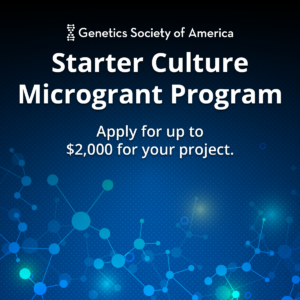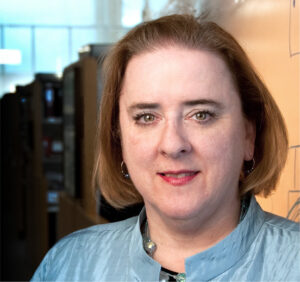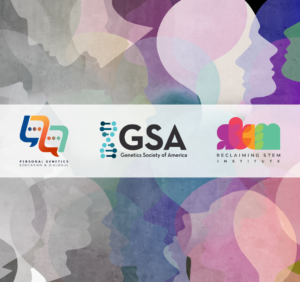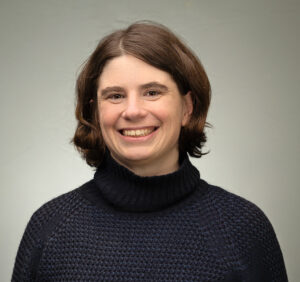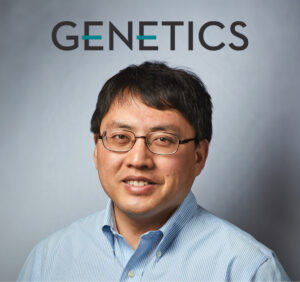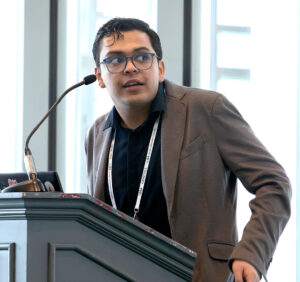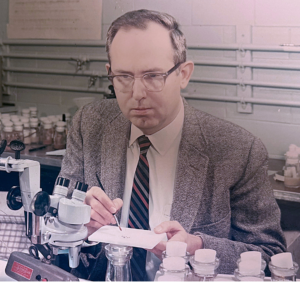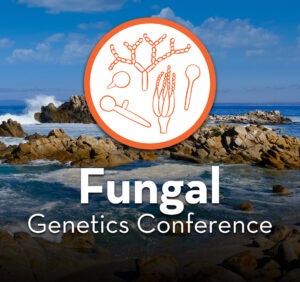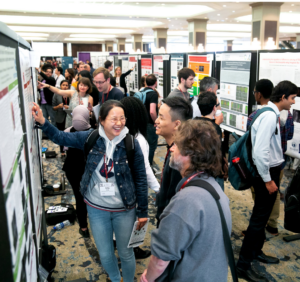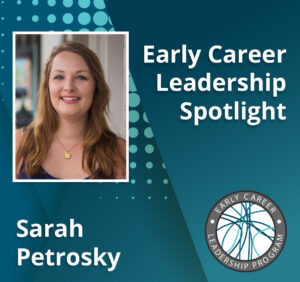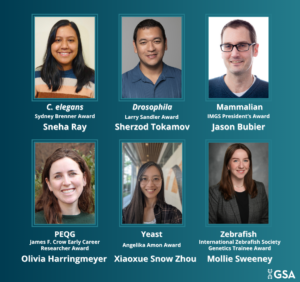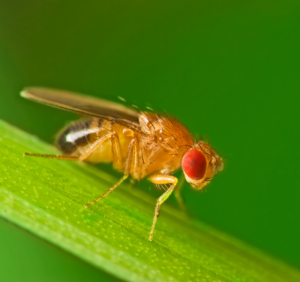Today’s guest post was contributed by Caitlan Rossi, a scientific and medical writer. Her work can be found at caitlanrossi.com.
A resource for the fly field
Shinya Yamamoto, Associate Professor in the Departments of Molecular and Human Genetics and Neuroscience at Baylor College of Medicine, went to veterinary school to better understand mammalian biology. As a student, he found using mammals like mice as model organisms to be limiting. But by the time he was pursuing a PhD—just as whole genome sequencing was taking off—he began to see the potential of the fruit fly. Looking for essential genes related to neurodevelopment and neural function, he and his colleagues in Hugo Bellen’s lab collaborated with scientists in the Baylor College of Medicine Human Genome Sequencing Center to perform one of the largest genetic screens using chemical mutagenesis, and the first to incorporate large-scale whole genome sequencing. Many of the genes they identified were critical to the fly’s nervous system and, notably, conserved in humans.
“Retrospectively, it makes sense because they’re essential genes: if they’re important for flies, it’s likely they’ll be important for humans as well,” Yamamoto explained. Hoping to leverage this data beyond Drosophila, his lab began to look for human gene homologs. At the time, it turned out that about a third were associated with a Mendelian genetic disorder, and three quarters were linked with neurological symptoms—results that confirmed fruit fly genetics is directly related to human disease. “It was a resource for the fly community, but also a proof of principle that flies can be used to identify novel human disease-causing genes,” said Yamamoto, who applied this fly data to diagnose six patients with rare diseases, the first of many fly-based contributions in his early career. Today, more than two thirds of the genes identified in this screen are linked to a Mendelian disorder, thanks to the extensive gene discovery effort in the human genetics field over the past decade.
The rise of humanization
Yamamoto and his colleagues, Hugo Bellen and Michael Wangler, went on to establish the first Model Organism Screening Center, focused on rare disease research through the lens of Drosophila. With the rise of reverse genetics, they pioneered the novel technique of humanization: knocking out fly genes using CRISPR or similar tools and replacing them with human genes. These “humanized flies” could be used to test patient variants and evaluate their functional impact in a range of conditions. “By using flies as a model organism or system, we’re not always trying to model a disease,” Yamamoto explained. “Our initial question is, ‘this patient has this genetic variant—does that do something to the protein function?’ For that, we don’t necessarily need to model. I’m just using the fly as a living test tube,” he elaborated. “Whether the variant of interest is a loss-of-function or gain-of-function allele can be tested using other methods such as ectopically overexpressing a human protein of interest in different tissues in the fly.” By taking advantage of the vast resources in the fly field and making new reagents for the community, Yamamoto and his team are transforming Drosophila into a versatile in vivo model for clinical diagnosis of rare diseases.
Encouraged by findings from experiments that used humanized flies and overexpression to study how rare disease variants affect protein function, Yamamoto and his colleagues applied the same approach to study other disease states like Alzheimer’s and autism. “We had all the tools available, so why don’t we apply this method to diseases that are more common?” he said. One project used Drosophila to study TM2D3, a gene linked to Alzheimer’s disease. Yamamoto and his team showed that TM2D3 and related genes were essential for longevity, motor function, and gamma-secretase activity—suggesting a potential causal role in Alzheimer’s. His lab also used fly genetics to study de novo mutations associated with autism spectrum disorder (ASD). A significant number of these variants altered protein function in flies, and the gene GLRA2 emerged as a key contributor to neurodevelopmental issues in previously undiagnosed patients. To Yamamoto, this work illustrates the two-way street between model organism research and clinical genetics. “We can actually go back and forth between human genetics and fly genetics, and also rare diseases and common diseases, to find genes that are important for human health,” he said.
Platforms for collaboration
Yamamoto has a broad educational background and can speak the language of both basic and clinical research, but he recognizes these disciplines are often siloed. This gap inspired him and his colleagues to create MARRVEL, a metasearch engine that compiles genetic information from both human and model organism research. Yamamoto also launched the ModelMatcher platform to connect potential research collaborators. The platform is a place where a basic scientist can register a gene of interest and meet other researchers with the same objectives, accelerating disease discovery, diagnosis, and even treatment. “My collaboration with clinicians and direct engagement with patients got me thinking about how I can connect all this knowledge and people to be able to help those who are really in need,” Yamamoto shared. While some patients can be diagnosed through state-of-the-art genomic technologies, others are left with uncertain genetic variants, precisely the kind of medical mysteries MARRVEL and ModelMatcher aim to help solve. “There are scientists that want to do this research, but they don’t know where to start. Here, clinicians can find the right model organism researcher to explore collaboration, and model organism researchers can also search human genetics information surrounding what is known about the disease and reach out to clinicians who see these patients,” Yamamoto added.
Fly model limitations (or lack thereof)
Yamamoto’s fly discoveries have spanned an astonishing range of fields, most recently infectious disease. His lab identified ANKLE2 as a strong microcephaly candidate gene, which also happens to be targeted by Zika virus proteins—a link that suggests Zika may co-opt this pathway. Building on this work, Yamamoto and his colleagues even used fly models to study COVID-19, generating a toolkit to study all 29 SARS-CoV-2 proteins and 242 of over 300 human proteins known to interact with viral proteins. “I’m not a virologist, but there was significant societal demand to understand the virus, and Drosophila is a powerful model organism for this type of research,” he said.
Yamamoto is currently applying fly models to study psychiatric disorders like schizophrenia as human geneticists and psychiatrists continue to find genetic variants associated with psychological disease. “If we can provide them with information about which variants are gain or loss of function just like we did for autism, we could actually start getting some genetic handles to understand the genetic basis of schizophrenia and other psychiatric conditions,” he explained.
While Drosophila has its limitations, Yamamoto sees endless potential as a fruit fly geneticist. “Some clinicians are skeptical about what a fly can do,” he reflected. “And that is understandable if one only thinks about Drosophila in the context of disease modeling. However, I feel there is so much we can learn about human disorders, especially in the context of shared genetic pathways and the underlying conserved molecular phenomena if we think more broadly. I think it’s kind of limitless. Maybe it’s our imagination that’s limiting us,” added Yamamoto.
Please join us in congratulating Shinya Yamamoto on his remarkable early career contributions to the field of genetics and receiving the GSA Early Career Medal.
2025 GSA Awards Seminar Series
Join Shinya Yamamoto, July 24, 2:00–3:00 p.m. EDT, as he explores how Drosophila melanogaster—the humble fruit fly—serves as a powerful model for uncovering the genetic roots of human diseases. Through cutting-edge genetic tools and close collaboration with clinical researchers, his team has helped identify over 50 novel human disease genes. This seminar will highlight the role of interdisciplinary partnerships and showcase online platforms like MARRVEL and ModelMatcher that bridge basic science and clinical research. Read more about Shinya in Genes to Genomes.







